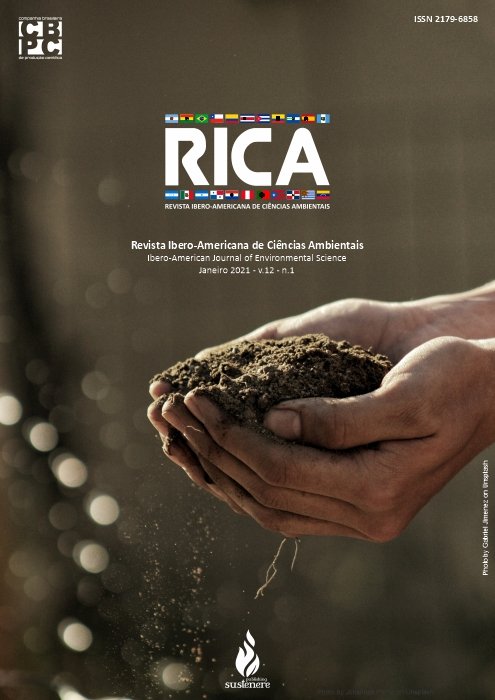Evaluation of the stabilization pond system in the Brazilian semi-arid
DOI:
https://doi.org/10.6008/CBPC2179-6858.2021.001.0025Keywords:
Stabilization ponds, Semiarid, Optional pond, Ripening pondsAbstract
In Brazil, as well as in several countries, various sewage treatment techniques are known and applied, from systems that require operation, maintenance and installation with more qualified labor (activated sludge, biodisc, among others) to the simplest processes. Among the simplest systems we have the stabilization ponds (LE) that are widely used in Brazil, and especially in the northeast region. The research was carried out in the municipality of Lajes/RN, at the geographic coordinates: -5 ° 42 ’00†S longitude and 36 ° 14 ’41†W, 125 km from the capital Natal/RN. The Effluent Treatment Station - ETE Lajes is located close to the urban area of Lajes/RN, at the coordinates projected at UTM, Datum: Sirgas 2000 - Zona 24S, 805812.09 mE/9370299.62 mS, more specifically in the area northwest of the municipal headquarters, with access through the RN-129 State Highway. When comparing the real-scale and design data, it was found that the design data was underestimated. The design of the system was based on an affluent BOD of 350 mg.L-1, while the monitoring data demonstrate that the contribution of the sanitary sewage of Lajes/RN corresponds to an average BOD of 715.43 mg.L-1 . Regarding the presence of CTT and temperature, underestimated design data were also observed when compared to the real scale. The Lajes/RN ETE was designed to remove 94.18% of the BOD, the data observed in the field shows that the system is currently 93.44% efficient. However, considering the provisions of CONAMA Resolution No. 430/11, ETE Lajes/RN has excellent efficiency in removing organic matter in relation to the concentration of organic matter. As for the project data, it was concluded that in the context of the state of Rio Grande do Norte they are underestimated, since the average concentrations of Biochemical Oxygen Demand (BOD) and Thermotolerant Coliforms (CTT) affluent to the systems are approximately 700 mg.L-1 and 1.00E + 07 NMP/100 ml respectively, implying high organic loads as the literature records for the northeast region. The ratio of Biochemical Oxygen Demand and Chemical Oxygen Demand (COD/DBO), 1.5, indicates that the effluent produced by the city of Lajes/RN is composed of a larger portion of organic compounds. Regarding the efficiency of removing Thermotolerant Coliforms, it is observed that the systems have good results when compared to other systems and what was designed, however these values could be better if the system had a second maturation pond, secondary maturation pond, noting that this situation would provide a longer hydraulic detention time and contact with solar radiation, high pH among other microorganism inactivation processes.
Downloads
Downloads
Published
Issue
Section
License
Copyright (c) 2021 Ibero-American Journal of Environmental Sciences

This work is licensed under a Creative Commons Attribution-NonCommercial-NoDerivatives 4.0 International License.
The CBPC - Companhia Brasileira de Produção Científica (Brazil CNPJ: 11.221.422/0001-03) the material rights of the published works. The rights relate to the publication of the work anywhere in the world, including rights to renewals, expansions and dissemination of the contribution, as well as other subsidiary rights. All electronically published works may subsequently be published in printed collections under the coordination of this company and / or its partners. The authors preserve the copyright, but are not allowed to publish the contribution in another medium, printed or digital, in Portuguese or in translation.









